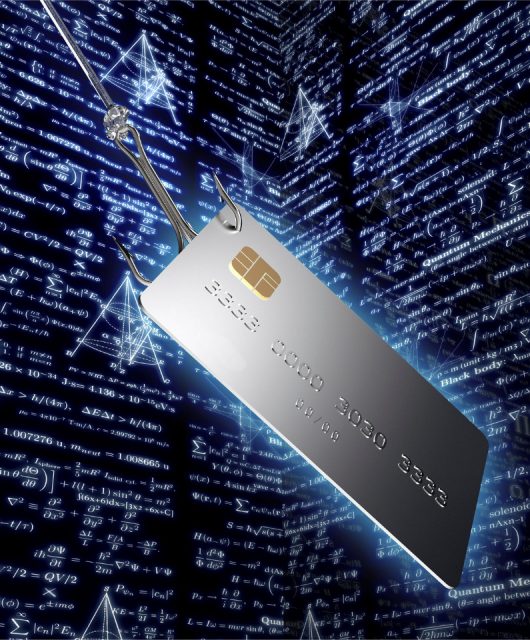Los antivirus escanean, detectan y eliminan virus conocidos, mientras que los programas antimalware te protegen contra todo tipo de software malicioso, incluidos virus, spyware y ransomware.
¿Alguna vez has hecho clic en un enlace sospechoso y te has dado cuenta de que tu ordenador empieza a funcionar más lentamente o se llena de ventanas emergentes?
Probablemente sea debido al malware, y no eres el único al que le ha pasado. Millones de hogares enfrentan ciberataques cada año, poniendo en riesgo datos e información personales. Para hacer frente a estos ataques, necesitamos soluciones de ciberseguridad como los antivirus y los programas antimalware, especialmente en el mundo actual, en el que dependemos de nuestros dispositivos para todo.
En este post, te mostramos una comparación detallada entre antivirus y antimalware y respondemos a algunas preguntas frecuentes (FAQ), para ayudarte a decidir cuál de ellos es el adecuado para tu red doméstica (puede que ambos).
¿Qué es un software antivirus?
El software antivirus es una herramienta que te ayuda a escanear, detectar y eliminar virus. Actúa como un escudo para tu dispositivo, protegiéndolo contra los virus (un tipo de software malicioso). Los virus pueden replicarse y propagarse en tu sistema, causando daños y robando información. Piensa en ellos como una enfermedad digital: pueden corromper archivos, interrumpir programas e incluso dar a los hackers acceso a tus datos personales.
Los programas antivirus modernos van más allá de identificar virus básicos, como los virus heurísticos, y ofrecen otras características como:
- Escaneo de tu dispositivo en busca de actividad sospechosa, incluidos correos electrónicos, descargas e incluso sitios web que visitas.
- Aislamiento de actores maliciosos o eliminación total de los mismos.
¿Qué es un software antimalware?
El software antivirus es una defensa sólida, pero no es la única herramienta de ciberseguridad que puedes utilizar. El antimalware es un tipo de software diseñado para combatir una gama más amplia de malware, no solo los virus.
Puede protegerte contra spyware que roba tus datos, ransomware que bloquea tus archivos o troyanos que se camuflan como programas legítimos.
La protección contra malware es una excelente manera de hacer frente a estas amenazas. Un buen programa de antimalware puede ayudarte a:
- Identificar y eliminar diversas amenazas de malware mediante técnicas como la detección basada en firmas (que busca patrones de malware conocidos) y el análisis de comportamiento (que monitoriza programas en busca de actividades sospechosas).
- Proteger en tiempo real al escanear constantemente tu dispositivo en busca de nuevas amenazas.
¿Cuál es la diferencia entre antivirus y antimalware?
Tanto el antivirus como el antimalware te ayudan a detectar software malicioso y protegerte contra él, pero no son lo mismo.
Aunque el término “antivirus” sugiere que sólo combate los virus informáticos, en realidad te protege contra muchos tipos de malware comunes hoy en día. La protección antivirus y la protección contra malware van de la mano. El antimalware da un paso más y se centra en amenazas de software más amplias y avanzadas, como los keyloggers ocultos que registran tus pulsaciones de teclado o los rootkits que otorgan a los atacantes un control casi invisible sobre tu dispositivo.
Ambos se complementan para actuar como el nivel más alto de defensa contra software malicioso (combinados con buenos hábitos de navegación en Internet). En resumen, el antimalware detecta formas más avanzadas de malware, mientras que el antivirus se encarga de amenazas tradicionales y más establecidas.
¿Qué debe incluir el software antivirus?
Los elementos clave de un software antivirus completo incluyen:
- Escáner en tiempo real: el escáner en segundo plano asegura que el programa detecta amenazas a medida que las encuentras.
- Actualizaciones automáticas: las actualizaciones permiten abordar nuevas formas de malware desde la instalación.
- Eliminación de amenazas: tu software debe eliminar el malware, no sólo detectarlo y bloquearlo.
- Interfaz fácil de usar: debe adaptarse tanto a quienes prefieren simplicidad como a quienes buscan más control.
¿Qué buscar en un software antimalware?
Tanto si optas por un software antimalware o si te decides por un antivirus con capacidades adicionales, asegúrate de que el programa te ofrezca lo siguiente:
- Entorno de prueba (Sandboxing): este entorno controlado permite al software analizar amenazas sospechosas y determinar si son seguras o no para su uso.
- Filtrado de tráfico: este tipo de filtrado protege tu dispositivo bloqueando el acceso a servidores y webs sospechosas relacionadas con la distribución de malware.
- Seguridad proactiva: tu software debe ser capaz de escanear, detectar y eliminar amenazas conocidas de malware, como troyanos, adware y spyware.
¿Necesitas un software antivirus o anti-malware?
Idealmente, deberías contar con ambos para obtener la protección más completa. El antivirus actúa como una primera línea de defensa contra amenazas comunes, mientras que el anti-malware aborda una gama más amplia de amenazas avanzadas, como gusanos, phishing, malvertising, cryptojacking, botnets y más. Ambos trabajan en conjunto para cubrir las brechas de seguridad y ofrecer una defensa en capas contra los ciberataques.
Los ciberataques son cada vez más frecuentes y sofisticados, de manera que entender la diferencia entre antivirus y antimalware no es suficiente. Es esencial conocer más detalles, desde la definición del software antivirus hasta las diferencias entre malware y virus. Esta información te ayudará a elegir el mejor software.
Utilizar los dos -antivirus y antimalware- junto con hábitos de navegación seguros creará una defensa en capas que dificultará la infiltración del malware en tu dispositivo. Considera explorar opciones populares de antivirus como Panda Dome, diseñado específicamente para uso doméstico, para proteger todos tus dispositivos, tu privacidad y a tus seres queridos. También puedes revisar el anti-malware de Panda Dome para Windows, Mac y Android.
Antivirus vs. AntiMalware: preguntas Frecuentes
Entender las diferencias entre antivirus y antimalware puede generar dudas. Esta sección de preguntas frecuentes responde a las más comunes sobre ambos tipos de software para ayudarte a elegir la mejor protección para tu dispositivo.
¿Puedo usar antivirus y software anti-malware al mismo tiempo?
Por supuesto; es totalmente seguro (y recomendable) utilizar ambos para tener la defensa más sólida contra las amenazas cibernéticas. Aunque puede consumir bastantes recursos del sistema, los beneficios de una protección en capas superan las desventajas.
¿Los programas antivirus y antimalware van a hacer que mi ordenador vaya más lento?
Pueden tener un ligero impacto en el rendimiento de tu ordenador, aunque los programas modernos están diseñados para ser más eficientes.
¿Cuál es más efectivo: antivirus o antimalware?
No hay un ganador absoluto en cuanto a efectividad. Es como un sistema de seguridad para el hogar: una cerradura robusta (antivirus) detiene intrusiones básicas, mientras que un sistema de alarma (anti-malware) evita intentos más sofisticados. Ambos trabajan en conjunto para ofrecer la mejor protección.
¿En qué se diferencian el antivirus y el anti-spyware?
El antivirus y el anti-pyware están enfocados para hacer frente a distintos tipos de amenazas. El antivirus protege contra programas maliciosos como virus y gusanos que pueden dañar o robar datos. El antispyware, por su parte, combate específicamente el spyware, un tipo de malware que monitoriza tus actividades y roba información personal, como contraseñas o hábitos de navegación.







